One of the most surprise visit. In conversation with my wife, she suggested that I visited Wave Hill garden in Bronx. We leave little fare from there but the way she talked about it make me interested to see it. It was little struggle to go and find it. When I enter and see the forgotten Gem in New York, I was very happy with the finding. I spent a nice day waking around and here is some photo from Wave Hill.
William Lewis Morris and his wife Mary Elizabeth Babcock acquired land in Riverdale in 1836, and built what we know as Wave Hill House in the early 1840s. Built in the Greek Revival style, its elegant design, executed in gray fieldstone, was heavily influenced by the work of the architect Minard Lafever.
Wave Hill is a 28-acre estate in the Hudson Hill section of Riverdale in the Bronx, New York City.
Wave Hill’s onsite parking lot is open, and our offsite lot—the Riverdale Park Parking Lot—is only two minutes from Wave Hill’s front entrance by car if the onsite lot is full when you arrive.
Wave Hill garden Visiting Hours
Wave Hill garden is open to the public on Tuesdays through Sundays. The garden is closed on Mondays, Thanksgiving Day, Christmas Day, and New Year’s Day.
The visiting hours for Wave Hill vary depending on the season. From April 1st to October 31st, the garden is open from 9:00 AM to 5:30 PM. From November 1st to March 31st, the garden is open from 9:00 AM to 4:30 PM.
Note that the last admission to the garden is 30 minutes before closing time. Also, please check the Wave Hill website or call their Visitor Services at (718) 549-3200 before your visit to confirm the hours, as they are subject to change.
It’s worth noting that while Wave Hill is beautiful year-round, the garden has different highlights and events during different seasons. Spring and summer bring colorful flowers and special events, while fall brings stunning foliage and harvest festivals. Winter brings holiday events and beautiful winter landscapes. So, plan your visit accordingly to get the most out of your experience at Wave Hill.
Wave Hill garden Transportation
There are several transportation options available for getting to Wave Hill garden:
- Subway and bus: Take the 1 train to the last stop, Van Cortlandt Park-242nd St, and then take the BxM3 express bus to West 249th Street and Independence Avenue. From there, it’s about a 10-minute walk to Wave Hill.
- Metro-North Railroad: Take the Hudson Line to Riverdale Station. From the station, you can take the Bx7 bus or a taxi to Wave Hill.
- Car: Wave Hill is located at 675 West 252nd Street, Bronx, NY 10471. There is limited on-site parking available, but street parking is also available in the surrounding area.
- Bike: Wave Hill is accessible by bike and has a bike rack available on site.
- Shuttle: Wave Hill also offers a free shuttle service from the Metro-North Riverdale station to the garden during select weekends and holidays.
Overall, there are several convenient transportation options available for getting to Wave Hill garden, whether you prefer public transportation, driving, or biking.
To protect the gardens and for the ease of other visitors and staff, retractable leashes are not permitted. Your service animal must be under your control at all times during your visit. Your dog may not sit on benches, chairs or other seats.
Wave Hill garden, Bronx history
Wave Hill is a beautiful public garden located in the Bronx, New York City. It is a serene oasis amidst the hustle and bustle of the city and is a popular destination for locals and tourists alike. However, the history of Wave Hill dates back much further than its establishment as a public garden.
The land on which Wave Hill now stands was once inhabited by the Lenape people, who were the original inhabitants of the area. The Lenape people were known for their hunting, fishing, and agriculture, and their presence in the area can be traced back thousands of years.
In the 19th century, the land was purchased by William Lewis Morris, a wealthy lawyer and politician. Morris built a large mansion on the property and named it Wave Hill. The mansion was later sold to George W. Perkins, a businessman and conservationist, who made significant changes to the property.
Perkins was a strong advocate for conservation and believed that preserving natural areas was important for both environmental and social reasons. He converted the estate into a public garden and opened it to the public in the early 20th century. Today, Wave Hill is a public garden and cultural center that hosts events, art exhibits, and educational programs.
The garden itself is a stunning display of natural beauty, featuring a variety of plant species, scenic views, and peaceful paths. The gardens are divided into different sections, each with its own unique character and style. Visitors can explore the aquatic garden, herb garden, and wild garden, among others.
In addition to the gardens, Wave Hill also boasts several historic buildings that are open to the public. The Perkins-Freeman Family Living Center is a historic home that showcases the lifestyle of wealthy New Yorkers in the early 20th century, while the Glyndor Gallery is a contemporary art museum that features works from emerging and established artists.
In conclusion, Wave Hill is not only a beautiful public garden but also an important part of Bronx history. From its roots as a Lenape settlement to its transformation into a private estate and later a public garden, Wave Hill has played an important role in the development of the Bronx and the preservation of natural areas. Today, it continues to be a beloved destination for those seeking peace and beauty in the heart of the city.
About Wave Hill garden
Wave Hill Garden is a public garden and cultural center located in the Riverdale section of the Bronx, New York City. It covers 28 acres of land overlooking the Hudson River and features a variety of gardens, walking trails, and historic buildings.
The garden was originally established as a private estate in the 19th century and was later converted into a public garden by George W. Perkins, a businessman and conservationist. Perkins believed in the importance of preserving natural areas and converted the estate into a public garden in the early 20th century.
Today, Wave Hill is a popular destination for New Yorkers and tourists alike, offering a peaceful retreat from the hustle and bustle of the city. The garden features several distinct sections, each with its own unique style and character.
The Aquatic Garden is a popular feature of Wave Hill, with a large pond filled with water lilies and other aquatic plants. The Wild Garden is another favorite, with a naturalistic landscape of trees, shrubs, and perennials. The Flower Garden is a more formal garden, with beds of annuals and perennials arranged in symmetrical patterns.
In addition to the gardens, Wave Hill also features several historic buildings that are open to the public. Glyndor House, a Beaux-Arts mansion built in 1927, now houses a contemporary art gallery. Perkins-Freeman House, a historic home, showcases the lifestyle of wealthy New Yorkers in the early 20th century.
Wave Hill also hosts a variety of events and educational programs, including concerts, workshops, and tours. The garden is open year-round, with different plants and flowers blooming in different seasons.
Overall, Wave Hill Garden is a beautiful and tranquil destination that offers a unique blend of natural beauty and cultural history. Whether you’re looking for a peaceful retreat, an opportunity to connect with nature, or a chance to learn something new, Wave Hill is definitely worth a visit.




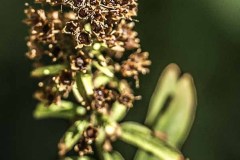



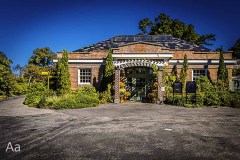


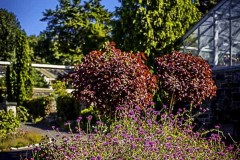






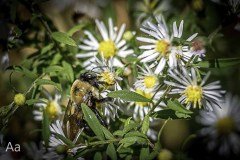
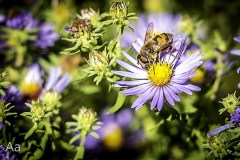






Breath-Taking Bali Villas for Sale
Find a Bali Villa Today
interesting news [url=https://ve-online.com/]https://ve-online.com/[/url].